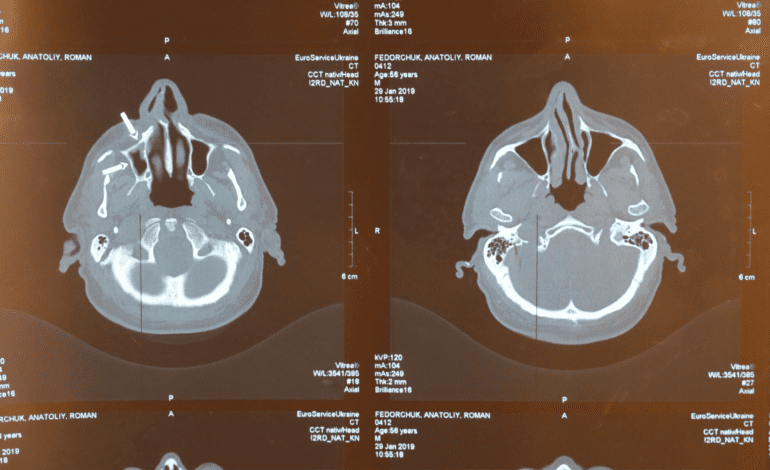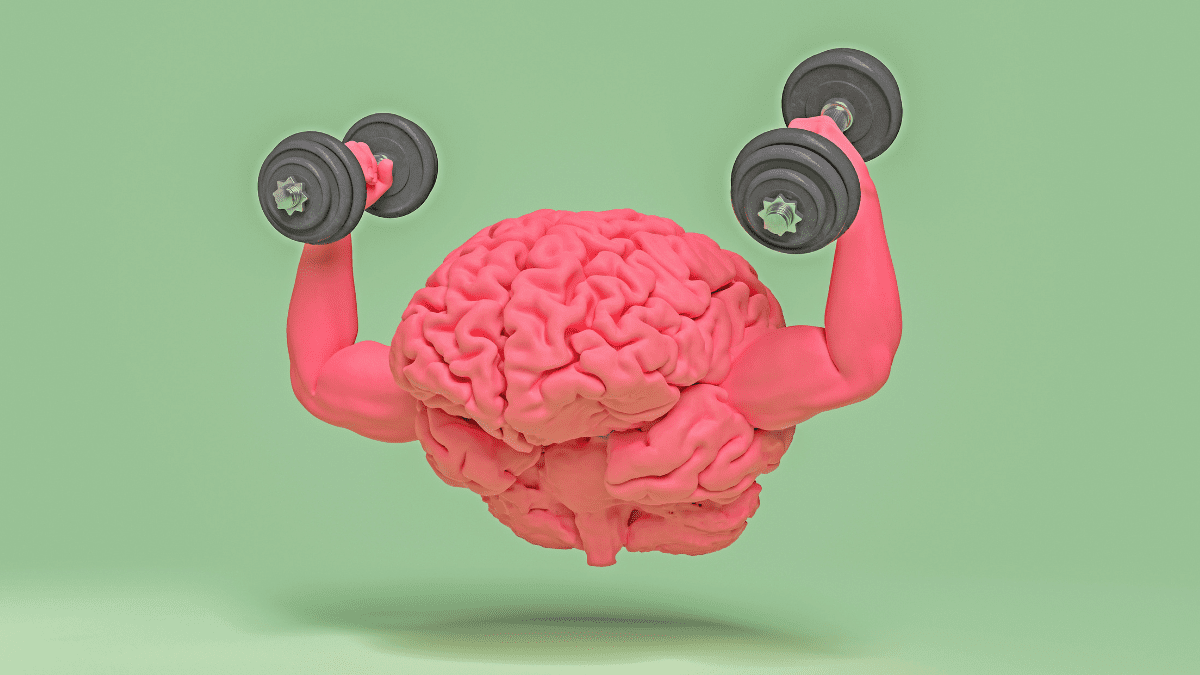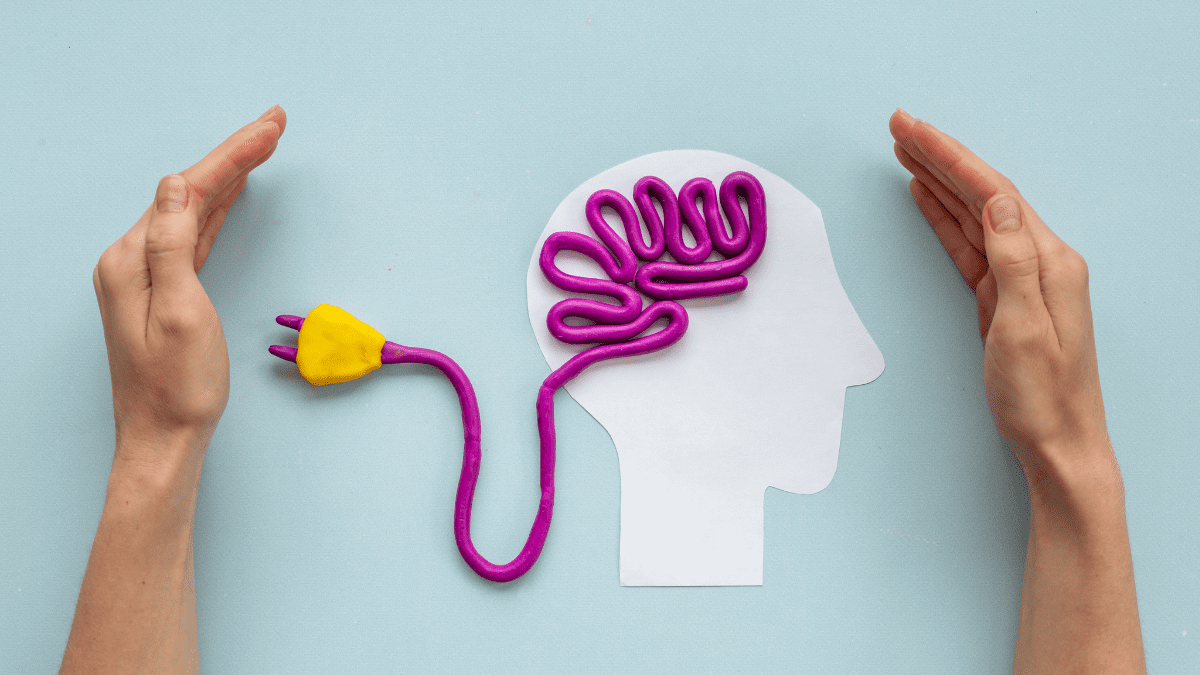Top 5 Neuroplasticity Exercises to Unlock Your Mind
Neuroplasticity exercises that rewire your brain fast. Uncover the truth no one tells you about your mind’s power to heal, grow, and radically transform—starting now.

- Mindfulness Meditation: How Does It Support Neuroplasticity?
- Physical Exercise: How Does It Enhance Neuroplasticity?
- Learning A New Skill: How Does It Drive Neuroplasticity?
- Neuroplasticity Exercises — FAQ
- Deep Sleep & Brain Training: The Overnight Neuroplasticity Hack
- Creative Expression: How Do Art And Music Fuel Neuroplasticity?
- Conclusion: What Happens When You Commit To Daily Neuroplasticity Exercises?
Mindfulness Meditation: How Does It Support Neuroplasticity?
Why Is Mindfulness One Of The Best Neuroplasticity Exercises?
To improve your brain’s flexibility, you need practices that activate new neural patterns. One of the simplest and most effective neuroplasticity exercises is mindfulness meditation.
When you sit in silence and observe your breath, your brain shifts. It moves from constant reactivity to calm awareness. This isn’t just calming—it’s rewiring.
Mindfulness gently strengthens your attention. It teaches the brain to stay present. And every time your mind wanders and you bring it back, you’re reinforcing new neural pathways.
How Does Meditation Shape A More Resilient Mind with Neuroplasticity Exercises?
Over time, regular meditation leads to structural brain changes. These include:
- Increased gray matter in areas related to learning, memory, and emotion
- Reduced stress response by calming the amygdala
- Improved self-awareness, which helps with emotional regulation
Each session you commit to brings subtle transformation. The best way to build that change is through daily practice.
What Are The Most Effective Ways To Begin Neuroplasticity Exercises?
Starting can feel overwhelming. But it doesn’t need to be. Here’s a mini checklist to get you going:
Start small: 5 minutes a day is enough
Find a quiet space: Let your nervous system settle
Focus on your breath: Inhale, exhale, and gently return when distracted
Be kind to yourself: Distraction is part of the training
Repeat daily: This is where the transformation happens
Consistency matters more than perfection. Each sit is a new chance to rewire.
How Can You Use This Practice To Support Long-Term Neuroplasticity?
To improve your brain long term, make mindfulness a lifestyle. Pair it with your morning coffee. Use it to unwind at night. Combine it with movement or journaling.
The more it integrates into your day, the deeper the neuroplastic shift becomes. You’ll think clearer. React less. And feel more in control of your mental space.
According to Healthline the many benefits of mindfulness meditation include improved memory, emotional balance, and stronger focus—all essential for lasting neuroplastic transformation.
Physical Exercise: How Does It Enhance Neuroplasticity?
Why Is Physical Exercise One Of The Most Effective Neuroplasticity Exercises?
To improve your brain, start with your body. Physical exercise is one of the most proven neuroplasticity exercises you can use.
In fact, every intentional movement activates your brain. As your heart rate increases, so does oxygen flow to the brain. As a result, new neural pathways begin to grow. Over time, this process strengthens focus, memory, and emotional balance.
Even better, this doesn’t require a gym. A short, mindful walk can spark these changes. So, what matters most is consistency—not intensity.
How Does Movement Create Long-Term Brain Changes?
Interestingly, your brain adapts with each workout. Here’s what happens:
- More gray matter forms in areas linked to learning and memory
- Neural connections grow stronger and more efficient
- Stress levels decrease as the nervous system resets
Because of this, people often report clearer thinking, improved sleep, and reduced anxiety after just a few weeks of regular movement.
Which Types Of Exercise Best Trigger Neuroplasticity?
To build a resilient brain, you need variety. Different activities stimulate different parts of your mind. That’s why the best way to activate neuroplasticity is through diverse movement.
Try this blend for full-brain engagement:
- Cardio workouts like running, biking, or dancing
- Strength training using weights or resistance bands
- Mind-body practices such as yoga or tai chi
Not only do these activate different brain regions, but they also keep your body energized and your motivation high.
How Can You Make Neuroplastic Exercise A Daily Habit?
Thankfully, adding exercise to your routine doesn’t have to be hard. To begin, start small. Then, build gradually. Use this mini checklist to stay on track:
- Move 20 minutes a day—even light movement counts
- Choose enjoyable activities—so you’ll stick with it
- Track your progress—this builds motivation
- Add music or nature—to enhance the sensory experience
- Pair movement with breath—for deeper awareness
Over time, these habits create deep brain changes. And they also fuel emotional resilience.
The benefits of exercise on brain health include improved mood, stronger memory, and faster learning—making movement one of the easiest tools for mental growth.
Learning A New Skill: How Does It Drive Neuroplasticity?
Why Is Learning A New Skill One Of The Best Neuroplasticity Exercises?
To rewire your brain, you must challenge it. Learning a new skill is one of the most powerful neuroplasticity exercises available.
Because every time you do something unfamiliar, your brain creates new connections. As a result, learning becomes a workout for your mind.
In fact, the best way to strengthen your brain is by stretching it beyond what it already knows. Whether it’s music, language, or painting, new skills fuel deep transformation.

How Exactly Does Skill Learning Rewire The Brain?
Surprisingly, even small efforts lead to big changes. When you learn something new, your brain responds in these key ways:
- Forms fresh neural pathways to store and apply new knowledge
- Strengthens existing connections through repetition and focus
- Expands gray matter in regions linked to memory, attention, and coordination
Eventually, these changes make your brain faster, more adaptable, and more creative.
Which Types Of New Skills Best Support Neuroplasticity Exercises?
Thankfully, there are many options that support brain growth. To improve neuroplasticity through learning, aim for variety. Different skills activate different brain systems.
Try these brain-boosting activities:
- Play a musical instrument to enhance memory and coordination
- Learn a new language to expand verbal processing and mental agility
- Explore visual arts like drawing or sculpture to engage creative thinking
- Practice movement-based skills such as dance or martial arts to combine physical and mental effort
Each one provides a unique challenge. So choose something that excites you.
How Can You Make Skill Building A Consistent Brain Training Habit?
Thankfully, learning doesn’t need to feel overwhelming. The key is consistency. Here’s your mini checklist to make it stick:
- Pick a clear goal and break it into simple steps
- Schedule regular sessions to build momentum
- Celebrate small wins to stay motivated
- Welcome mistakes as proof of growth
- Reflect weekly on what you’ve learned
Over time, this daily effort transforms your brain—and your confidence.
The benefits of lifelong learning on brain health include sharper memory, increased creativity, and a deeper sense of purpose—especially when practiced with intention.
Neuroplasticity Exercises — FAQ
What Are the Most Effective Neuroplasticity Exercises to Boost Brain Function?
To strengthen your brain, you need daily stimulation. Thankfully, there are simple exercises that support deep change.
Here is the top 5 neuroplasticity exercises you can start with:
- Mindfulness meditation – strengthens attention and emotional control
- Aerobic exercise – increases BDNF, helping neurons grow
- Learning a new skill – builds fresh neural pathways
- Creative expression – boosts memory, mood, and mental flexibility
- Quality sleep – helps consolidate learning overnight
To see lasting benefits, consistency is key. So choose what you enjoy—and do it often.
How Long Do Neuroplasticity Exercises Take To Work?
Fortunately, most people feel small changes within a few weeks. For example, you might notice better focus, clearer thoughts, or improved mood.
But real transformation takes time. On average:
- Short-term changes can happen in 2–4 weeks
- Deeper rewiring begins after 6–8 weeks of consistent effort
- Lasting habits form after 2–3 months of daily practice
The best way to stay motivated is to track how you feel over time. Even subtle shifts show your brain is changing.
Can Neuroplasticity Exercises Help Recover From Brain Injury Or Trauma?
Yes—they absolutely can. In fact, that’s one of the most exciting things about neuroplasticity. The brain can adapt—even after trauma. When one pathway is damaged, the brain can build another.
To support healing, try:
- Physical therapy combined with mindfulness
- Cognitive exercises like puzzles or language practice
- Gentle movement and breathwork
- Daily routines that support deep sleep
As always, it’s important to work with a qualified therapist or specialist. But with the right support, recovery is not only possible—it’s expected.

Deep Sleep & Brain Training: The Overnight Neuroplasticity Hack
Why Is Deep Sleep One Of The Most Essential Neuroplasticity Exercises?
To truly rewire the brain, deep sleep is non-negotiable. In fact, it may be the most overlooked of all neuroplasticity exercises.
Not only does it help your body rest, but it also activates powerful changes in your brain. During deep sleep, your brain clears out waste, restores energy, and most importantly—strengthens the neural pathways formed during the day.
Because of this, deep sleep becomes a built-in brain training system. And the best part? It works without you doing anything at all.
How Does Deep Sleep Reinforce Your Brain’s Learning Process?
Surprisingly, much of your learning happens while you’re asleep. Although the day is when you absorb information, night is when it sticks.
As your body sleeps, your brain is busy. It replays the same neurons activated during the day. Then, it strengthens those pathways, solidifying what you’ve learned.
As a result, deep sleep improves memory, boosts clarity, and helps you retain new habits. Even better, this happens automatically, without conscious effort.
Over time, consistent sleep transforms your ability to think, feel, and respond. That’s why it’s so essential for deep brain change.
What Happens When You Skip Deep Sleep?
Unfortunately, when deep sleep is disrupted, the brain can’t perform its overnight reset.
Without enough rest, your focus weakens. Your mood dips. Your ability to process and recall information declines.
Eventually, chronic sleep loss slows neuroplasticity altogether. This makes it harder to build new habits, regulate emotions, or recover from mental fatigue.
For this reason, guarding your sleep is one of the smartest ways to protect your brain’s plasticity.
How Can You Improve Deep Sleep To Support Neuroplasticity?
Thankfully, improving your sleep doesn’t need to be complicated. The best way to deepen your rest is by creating a consistent, calming routine.
Use this mini checklist to support better brain recovery at night:
- Keep a consistent sleep schedule—same time to bed and wake
- Wind down gently—with reading, soft music, or light stretching
- Block blue light before bed—shut screens off 1 hour before sleep
- Make your room cool and quiet—your brain sleeps best at 65–67°F
- Avoid caffeine and heavy food—especially after 2 p.m.
When these small habits are repeated, they change everything. Over time, they train your brain to fall into deep, restorative sleep more easily.
The benefits of deep sleep on brain health include faster learning, clearer thinking, and deeper emotional resilience—making it one of your mind’s most essential tools.
Creative Expression: How Do Art And Music Fuel Neuroplasticity?
Why Is Creative Expression A Powerful Neuroplasticity Exercise?
To fully engage your brain’s potential, creativity is key. In fact, creative expression is one of the most enriching neuroplasticity exercises you can practice.
Because when you paint, write, or play music, you activate multiple areas of the brain at once. As a result, your brain begins forming new neural pathways. Over time, this expands your ability to process emotions, solve problems, and adapt to new situations.
Moreover, creative activities invite your mind into a state of flow. And in that flow, real rewiring happens.
How Do Art And Music Reshape The Brain Over Time?
Interestingly, art and music stimulate the brain differently than other types of learning. That’s why they offer such unique neuroplastic benefits.
Here’s how creativity changes your brain:
- New connections form as you learn visual or auditory skills
- Old patterns dissolve as your mind tries new approaches
- Gray matter increases in regions linked to memory and emotion
- Focus sharpens while you work through creative challenges
Because of these effects, creativity doesn’t just express the mind—it reshapes it.
What Makes Music A Neuroplastic Superpower?
To improve your brain’s adaptability, music is one of the most effective tools. Whether you listen or play, music taps into memory, movement, emotion, and timing—all at once.
In fact, learning an instrument:
- Boosts concentration
- Enhances fine motor coordination
- Strengthens language and auditory processing
Meanwhile, listening to music can reduce stress and spark emotional clarity. So, adding rhythm to your routine strengthens the mind in powerful ways.
How Can You Use Creative Practice To Rewire Your Brain?
Thankfully, you don’t need to be a professional artist. The best way to begin is to simply create.
Use this mini checklist to inspire daily creative expression:
- Set a playful time each day—even 10 minutes counts
- Try new tools or techniques—keep your brain guessing
- Join a class or group—to stay motivated
- Avoid self-criticism—just enjoy the process
- Reflect on how it felt—to deepen emotional insight
Because the goal isn’t mastery—it’s momentum. As your hands create, your brain grows.
Conclusion: What Happens When You Commit To Daily Neuroplasticity Exercises?
To rewire your brain, you don’t need to do everything. You only need to begin.
Each time you practice a neuroplasticity exercise, your brain adapts. Whether it’s mindful meditation, physical movement, learning something new, sleeping deeply, or expressing creativity—your brain listens.
Over time, these simple habits create long-lasting change. As a result, you may feel more focused. You may react more calmly. You may even notice your thinking becoming clearer, lighter, and more open.
Because the truth is, your mind is not fixed. It’s flexible. It’s responsive. And it’s ready.
Here’s how to begin today:
- Pick one practice that feels accessible
- Start small—even 5 or 10 minutes counts
- Repeat it daily to activate consistent brain change
- Track how you feel—growth loves reflection
- Stay curious—your brain thrives on new experiences
To deepen your understanding, you might explore this guide on how neuroplasticity changes your brain and your life.
Eventually, these small acts become part of who you are. Then, what once felt hard becomes effortless. And what once felt stuck becomes free.
So the question is—what will you rewire first?
Your brain is always changing. The only question is whether it’s happening by default—or by design.
Choose design.
Choose transformation.
Start now.
Created by Lili Vu, holistic health & nutrition coach in training. Deeply passionate about mind-body healing, nourishment, and intentional living — practices I’ve lived, tested, and continue to grow through. Embracing my ADHD and supporting my partner through a life-altering stroke reshaped how I understand the nervous system, resilience, and healing. I explore holistic well-being practices including yoga, plant-based nutrition, gut and hormone health, trauma recovery, and mindful habit change — all rooted in my personal healing journey. 🌿







